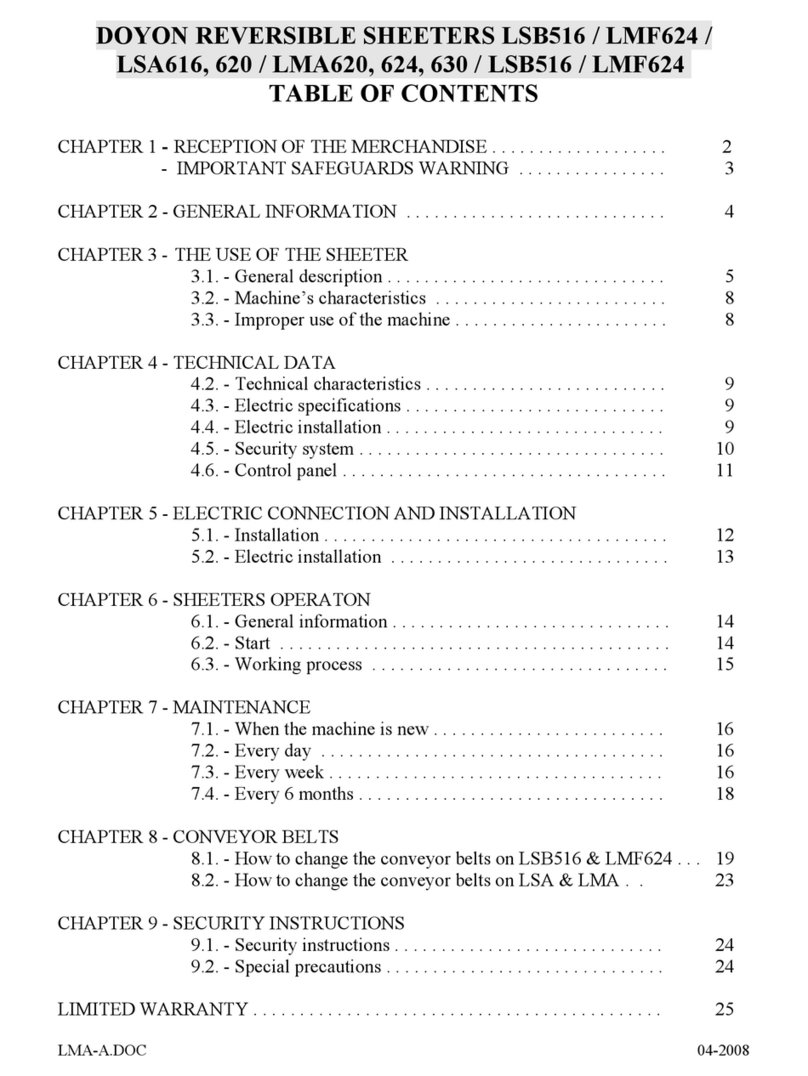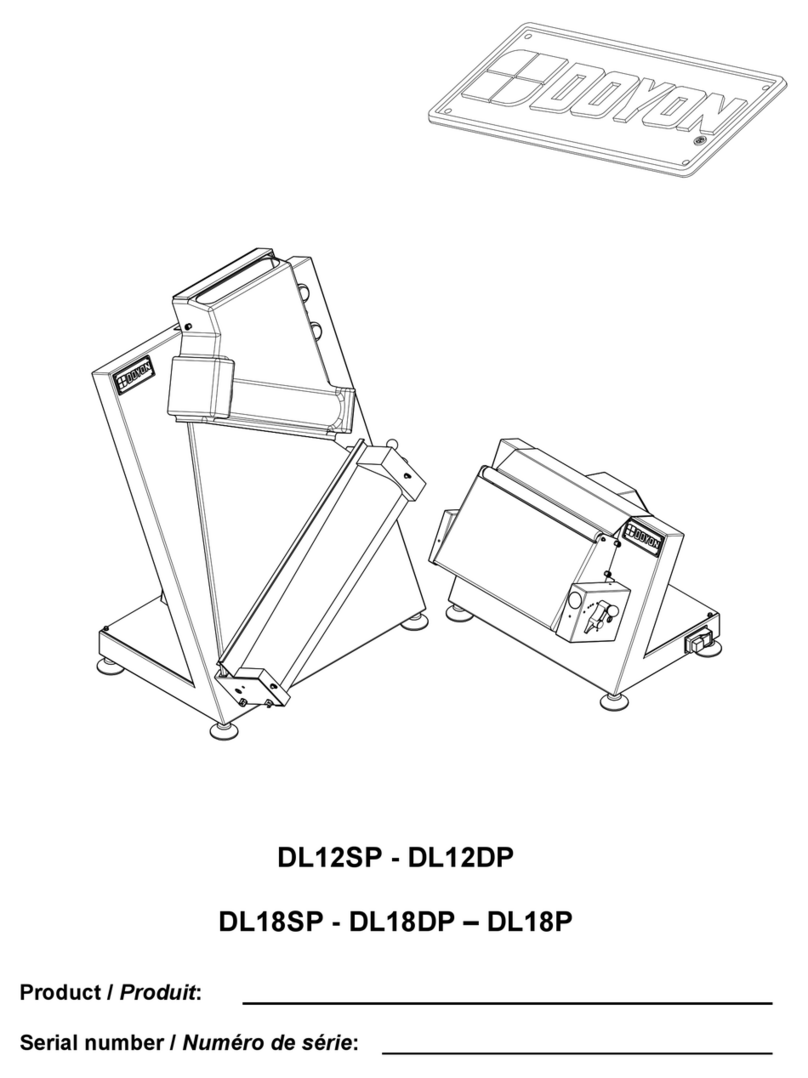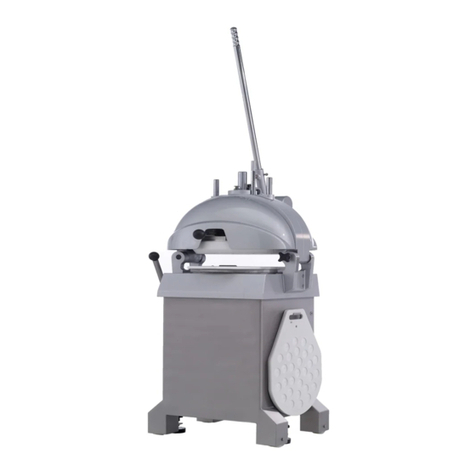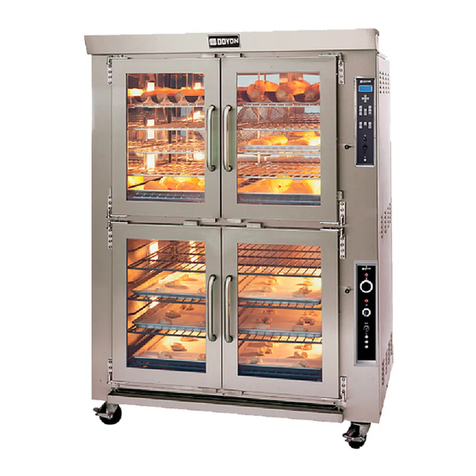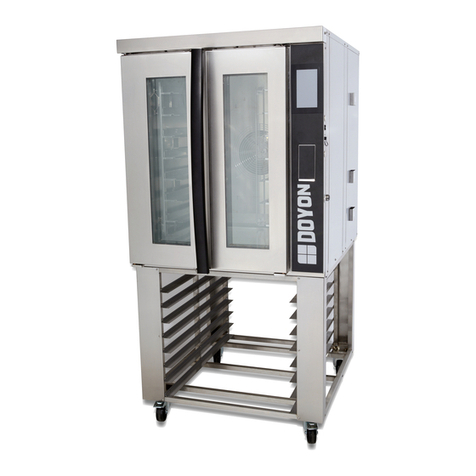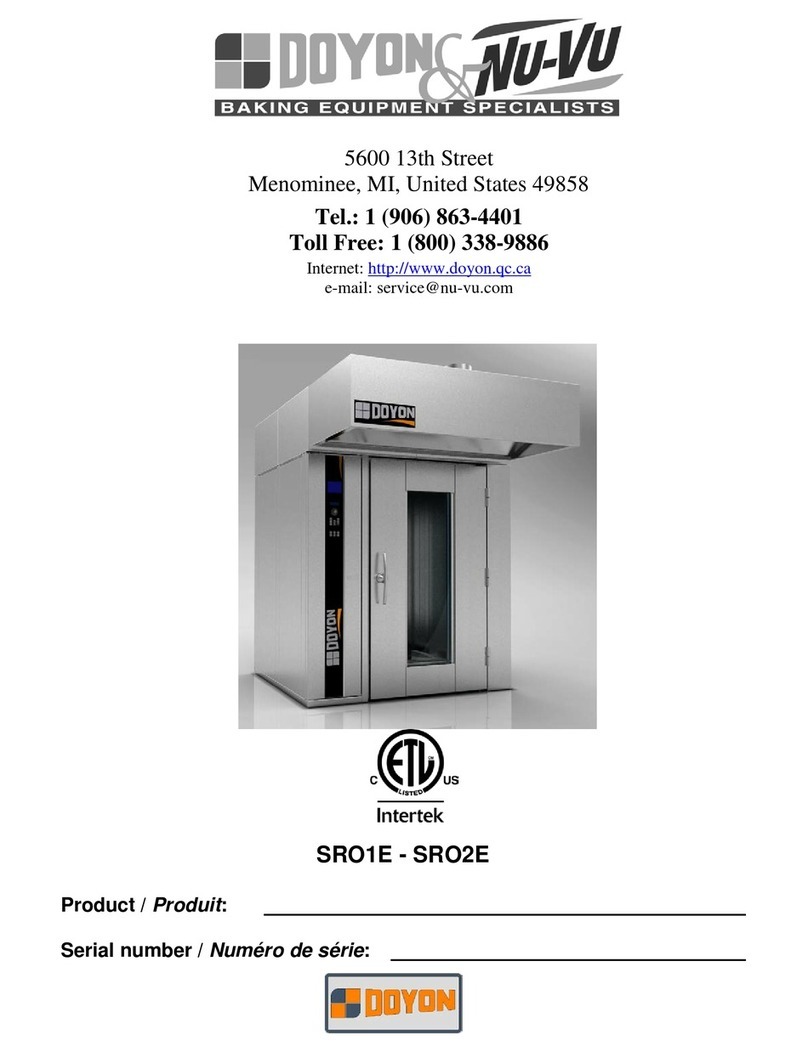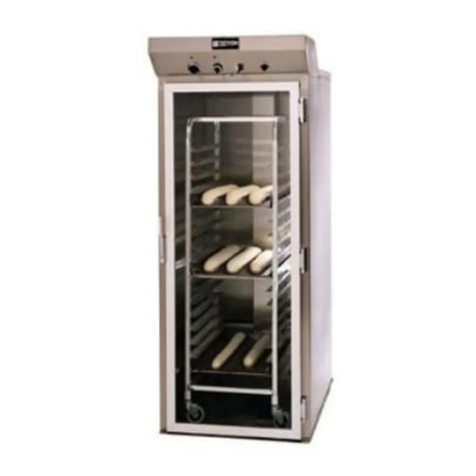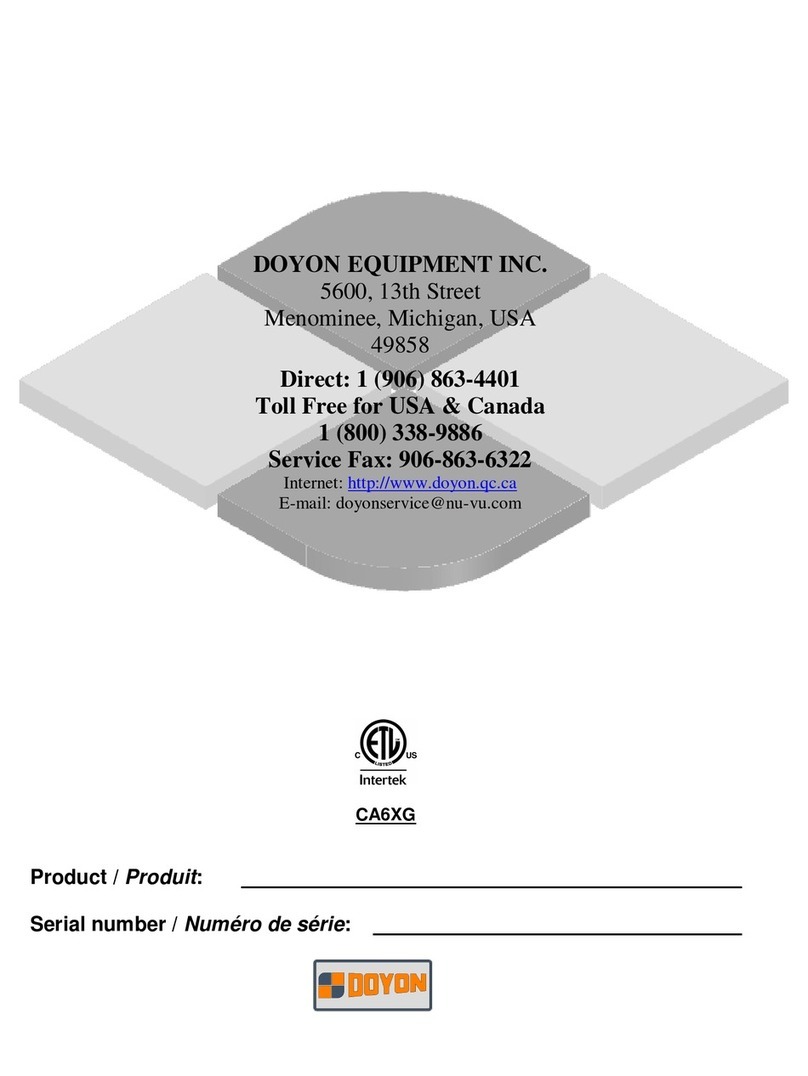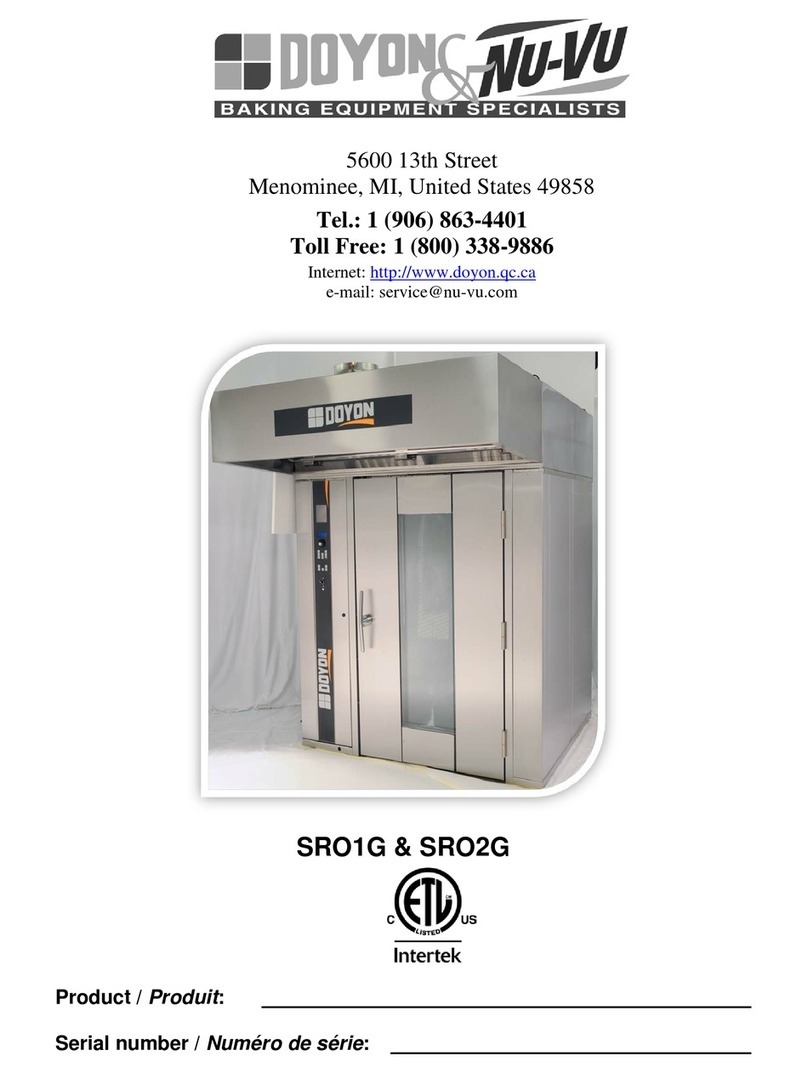
3.4.- CONNECTING AND ELECTRICAL SUPPLY
CAUTION Any intervention to the equipment must be
made after the electrical supply cable has
been disconnected, however, when working
without power is not possible for technical
reasons, duly precautions to reduce the risk of
electrical shocks and short-circuits must be
taken.
This intervention must be performed by a duly accredited technician.
Electrical connection must be made by means of a plug or junction
box connectors, from a “neutral TT” line, with a 300mA differential
protection.
The electrical power available must comply with the specifications of
the properties on the nameplate of the machine.
Mending supply cables is not allowed.
Power strips for phase reversal, 3D power sockets or other
adaptation systems are not allowed.
More than one machine connected to the same power source
(socket or derivation) is not allowed.
It is necessary to perform an equipotential bonding between
machines that share a ferruled ground wire supplementary
connection, of a section of at least 6 mm2, connected to the exterior
screw of this machine identified by the symbol .
CHAPTER 4
MACHINE USAGE
3.1.- MACHINE CONTROL PANEL
This machine is equipped with a technologically developed control
system which controls engines and other electrical equipments.
For the machine to run, the following conditions must be respected:
Closed lid; emergency button unlocked and main switch on.
ATTENTION:
Control must be performed with a
finger. The use of hard or sharp
objects may cause unrepairable
damage.
4.1.1 – Analog control
4.1.2 – Emergency stop
CAUTION In case of emergency press the
emergency button.
The emergency button must be pressed only when there is the need
to stop the machine abruptly, is case of suspicion of damage to the
machine, hazard to people’s, property’s or animals’ safety.
Do not use this button to stop work under regular conditions, use the
stop button C.
4.1.3 – Rotation direction check
This procedure applies only to machines which are powered by a
three-phase electrical system.
Assure there is nothing on the rollers.
Power the table in compliance with the specifications on the
nameplate of the machine;
Turn the main switch on;
Make sure the lid is closed and the emergency button is not
activated.
Press button B;
The rollers must turn simultaneously;
The rotation direction of the rollers must pull the dough;
Should this not happen, stop the machine on button C.
Turn the main switch F off.
Unplug the machine from the power supply and switch two phases
between themselves.
Switch it all on again, for this way the machine shall turn in the
correct direction.
4.1.4 – Placing the dough and setting thickness
Perform a cleaning operation according to the chapter on daily
maintenance in this manual;
The adequate type of dough and the placing position are two very
important elements in the fabrication process, as on these may
depend on the performance of the machine. Good practice must be
respected so as not to overwhelm the machine
CAUTION Caution: lid closing offers a residual risk of
upper body limbs jam.
Assure there is nothing stopping the closing of
each lid.
Always set handles D and E to adjust of the opening of the rollers
and the conveyor opening adjustments according to the hydration
percentage and the configuration of the dough. It must always be
flattened to avoid it getting stuck on the lid and overwhelm the
machine.
Start the machine as described ahead and only later place the
dough.
CAUTION Never place dough on the rollers while the
machine is stopped.
The start of the machine while loaded can cause
unrepairable damage.












